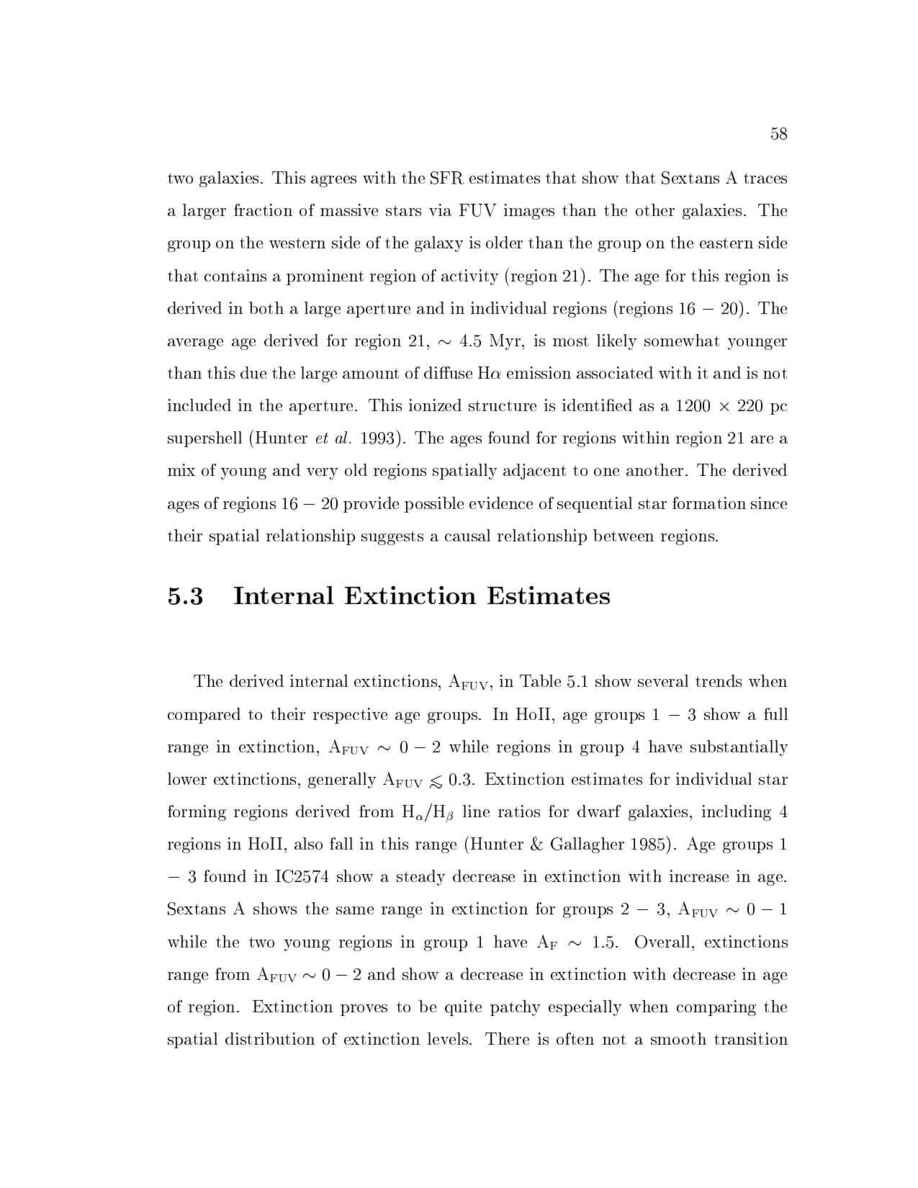
58
two galaxies. This agrees with the SFR estimates that show that Sextans A traces
a larger fraction of massive stars via FUV images than the other galaxies. The
group on the western side of the galaxy is older than the group on the eastern side
that contains a prominent region of activity region 21. The age for this region is
derived in both a large aperture and in individual regions regions 16
,
20. The
average age derived for region 21,
4.5 Myr, is most likely somewhat younger
than this due the large amount of di use H emission associated with it and is not
included in the aperture. This ionized structure is identi ed as a 1200
220 pc
supershell Hunter
et
al.
1993. The ages found for regions within region 21 are a
mix of young and very old regions spatially adjacent to one another. The derived
ages of regions 16
,
20 provide possible evidence of sequential star formation since
their spatial relationship suggests a causal relationship between regions.
5.3 Internal Extinction Estimates
The derived internal extinctions, A
FUV
, in Table 5.1 show several trends when
compared to their respective age groups. In HoII, age groups 1
,
3 show a full
range in extinction, A
FUV
0
,
2 while regions in group 4 have substantially
lower extinctions, generally A
FUV
0
:
3. Extinction estimates for individual star
forming regions derived from H H line ratios for dwarf galaxies, including 4
regions in HoII, also fall in this range Hunter & Gallagher 1985. Age groups 1
,
3 found in IC2574 show a steady decrease in extinction with increase in age.
Sextans A shows the same range in extinction for groups 2
,
3, A
FUV
0
,
1
while the two young regions in group 1 have A
F
1
:
5. Overall, extinctions
range from A
FUV
0
,
2 and show a decrease in extinction with decrease in age
of region. Extinction proves to be quite patchy especially when comparing the
spatial distribution of extinction levels. There is often not a smooth transition
